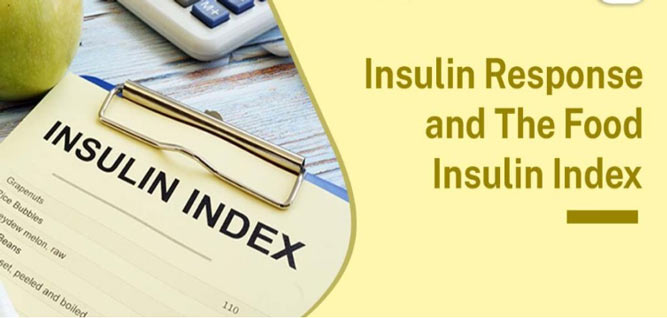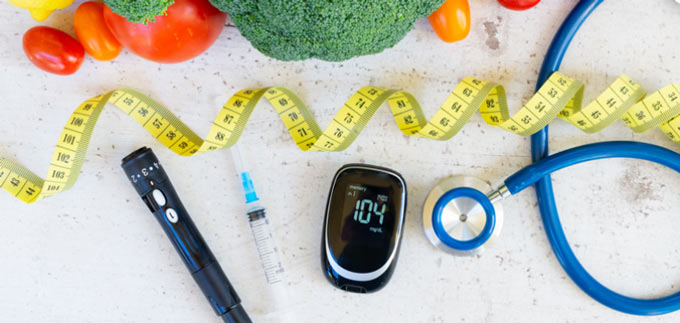What Is Insulin Index
Jun 21, 2023 By Nancy Miller
Do you need help to keep up with rapidly changing nutrition trends? Feeling overwhelmed by all the controversial topics and debates on which diet is best or what foods are healthy? Undoubtedly, staying up-to-date with the latest information can take a lot of work.
That is why it's important to become familiar with different tools available for understanding food and nutrition, like the insulin index.
In this post, we'll discuss exactly what the insulin index is, the potential benefits of referring to an insulin index when making dietary decisions, and how it works so that you can make informed choices about your health. Let’s explore!
What is the Insulin Index (II)?
The Insulin Index (II) measures the amount of insulin the body releases in response to food consumption. It is determined by measuring the level of insulin present in the blood after meals or snacks containing various macronutrients.
The II can help individuals better understand how their bodies respond to different types of food and, as such, formulate more effective nutrition strategies.
It is especially beneficial for those with diabetes since understanding the body’s response to food can help people better manage their condition.
The II has also been shown to be useful in helping people lose weight and improve their metabolic health by enabling them to make more informed dietary choices.
By understanding how their bodies respond to certain foods, individuals can reduce their caloric intake while still feeling satisfied.
How does it differ from Glycemic Index (GI)?

The Glycemic Index (GI) measures how quickly a food affects blood sugar but doesn’t consider the amount of food eaten. GI is based on 50g of total carbohydrate consumed per serving.
The GL considers both the type and quantity of carbohydrates in a meal. The GL measures the effect of an entire meal or snack on blood sugar over a two to four-hour period.
The GL is calculated by multiplying the GI of each food item by its carbohydrate content, then adding up all the values for a total GL.
This means that a food with a low GI can still have a high GL if it contains a lot of carbohydrates. For example, watermelon has a high GI, but because it contains a small amount of carbohydrates per serving, it has a low GL.
The GL is useful for people with diabetes since it indicates how foods will affect blood sugar levels after eating. By choosing lower GL meals and snacks, people with diabetes can help control their blood sugar levels more easily.
It’s also important to monitor portion sizes when considering the GL of a meal. Eating too much of even low-GL food can still lead to an increase in blood sugar levels.
What are the benefits of understanding the II and GI for those with diabetes or pre-diabetes
Understanding the GI and II of different foods can benefit those with diabetes or pre-diabetes by helping them to make more informed dietary choices.
Eating a diet based on low-GI or low-II foods helps people maintain stable blood sugar levels, reducing their risk for complications from diabetes and can help manage their weight.
Research has also suggested that following a low-GI diet may reduce the risk of developing type 2 diabetes. Additionally, understanding how different foods affect blood sugar can help people with diabetes better manage their results and adjust their diets accordingly.
Low GI and II foods are nutrient-dense and provide more sustained energy throughout the day than high GI and II foods. This benefits those with diabetes or pre-diabetes as it helps keep their energy levels consistent throughout the day and prevents hunger highs and lows.
Finally, GI and II can help people with diabetes or pre-diabetes identify which carbohydrates are healthiest for them to eat. By understanding how different foods affect blood sugar, they can make more informed dietary choices to better support their health.
What foods should be avoided due to their high-II content

High-II foods are high in sugar, saturated fat, sodium, and processed and fast foods. Avoid cookies, candies, chips, cakes, pastries, ice cream, french fries, or other deep-fried foods.
Other items such as white bread, sugary cereal, and salty snack mixes should also be avoided since these foods can lead to excess weight gain, high blood pressure, and other health risks.
Additionally, limiting or avoiding processed meats and full-fat dairy products is important due to their high levels of saturated fat and sodium. Eating a balanced diet that includes a variety of healthy foods such as fruits, vegetables, whole grains, lean proteins, and low-fat dairy products will help ensure a healthy lifestyle.
When dining out at restaurants, it’s important to be mindful of food choices and avoid items high in calories, fat, and sodium. Look for meals lower in saturated fat, such as grilled chicken or fish, and include plenty of vegetables on the side.
Tips to reduce your overall II intakes while still enjoying healthy and delicious meals
1. Make fresh meals from scratch. This will help you to control the ingredients and amount of II in your food.
2. Choose lean proteins, like fish or poultry, over red meats when possible. These contain significantly less II than red meats and are healthier choices overall.
3. Reduce the amount of processed foods that you consume. Processed foods often contain added II to help preserve the food and give it a longer shelf life.
4. When you do buy processed foods, make sure to read the nutrition label carefully. Look for products that are low in II, and try to opt for ones made with natural preservatives instead of artificial ones.
5. Choose fruits and vegetables as snacks instead of packaged snacks. Fruits and vegetables are naturally low in II, and they provide essential vitamins and minerals as well.
FAQs
How is the insulin index calculated?
The insulin index is calculated by measuring the amount of insulin released in response to a specific food. This is usually done with an indirect measure such as plasma glucose or insulin levels.
This calculation uses various methods, including direct infusion, mixed meal tests, and glycemic load calculations. The results are then compared to the known food responses, and the relative insulin index is determined.
What does high insulin index mean?
A high insulin index means that a particular food will cause an above-average insulin release when ingested compared to other foods.
Foods with a higher insulin index tend to have a greater effect on glucose and insulin levels, which can result in an increased risk of developing type 2 diabetes and obesity.
What are some foods with low insulin index?
Foods with a low insulin index include non-starchy vegetables such as broccoli, cabbage, and kale; legumes including chickpeas, lentils, and green peas; whole grains like quinoa, oats, and barley; and lean proteins like fish, chicken breast, and tofu.
Conclusion
I hope this article has provided you with a better understanding of What Is Insulin Index and how it works. As we have seen, the insulin index is an important measure of how certain foods affect our body's glucose metabolism.
It can help us decide which foods are best for controlling blood sugar levels and managing diabetes. When making dietary choices, always consult with your healthcare provider or a registered dietitian to ensure that the foods you select are healthy and beneficial for your needs.








